Introduction
The iPhone XR is the third iPhone to be launched this year, after the iPhone XS and the iPhone XS Max. While the two iPhone XS models are nearly identical save for the size, the iPhone XR is a significant departure for the iPhone X series and possibly a new chapter going forward.
When Phil Schiller introduced the iPhone XR, he said Apple wanted to bring the technology and the experience of the iPhone XS to as many customers as possible, and the iPhone XR is Apple's solution to that. It aims to bring the design, features and much of the experience of the iPhone XS at a lower price.

For starters, the iPhone XR starts at $749, which is $250 less than the base iPhone XS. So, what do you have to give up to get that price? There's now a lower resolution LCD, the body is thicker and heavier and made out of aluminum, and there's only one camera on the back.
What you still get is the same general iPhone X series design, the same powerful A12 Bionic chipset from the XS, the same TrueDepth camera with the faster Face ID system and the single camera on the back is the same as the main 12MP sensor on the back of the XS.
To make things more interesting, the iPhone XR also comes in six colors, the most Apple has ever had for any iPhone.
Apple iPhone XR specs
- Body: Aluminum frame, glass back, IP67-certified, six colors
- Display: 6.1-inch, 1792 x 828 (326 PPI), IPS LCD, 1400:1, wide-color (P3)
- Rear camera: 12MP, f1.8, OIS + EIS, dual pixel PDAF, quad-LED flash, 4K60 video, wide-color
- Front camera: 7MP, f2.2, 1080p60, EIS, display flash, wide-color
- Software: iOS 12
- Chipset: Apple 12 Bionic, 2.49GHz six-core CPU (2x Vortex + 4x Tempest), quad-core Apple GPU, octa-core Neural Engine
- Memory: 3GB LPDDR4X SDRAM, 64/128/256GB NVMe storage
- Connectivity: Dual SIM (nano SIM + eSIM), LTE-A, dual-band Wi-Fi 802.11ac with 2x2 MIMO, Bluetooth 5.0, AGPS/GLONASS/Galileo/QZSS, NFC (Apple Pay only)
- Battery: 2942mAh, USB-PD fast charge support, Qi charging support, 5W supplied charger
- Misc: TrueDepth camera system with Face ID, stereo speakers
It's a tough balancing act to get the price, features and performance right. Whether Apple managed to do it is something we have to find out but only after spending some time with the device. Apple sent us the device ahead of launch and after a full week of use, we think we know the answer.
One thing's for sure, this is easily the most interesting iPhone to have come out this year.
Unboxing
The packaging is where the iPhone XR and the iPhone XS are identical. Both include the same accessories, which feature the measly 5W charger, Lightning to USB cable, and the EarPods with Lightning Connector. It's pretty Spartan and while it avoids waste, we wish Apple at least provided a higher wattage charger, like the 12W model that comes with the iPads or the 10W model some iPhones came with in the past.
Design
If you pass by a black or white iPhone XR at the Apple Store, you'd be forgiven to mistake it for the iPhone XS. The core design of the iPhone XR is identical to that of the iPhone XS and that's really the key message here that Apple wants you to know: this is very much an iPhone X-series device.
We'll talk about the colors first since that's the aspect of the phone Apple seems to be pushing the hardest in its marketing. Yes, the iPhone XR comes in six new colors. You have your classics, which are the black and the white. The black has a matching black frame while the white has a silver or rather unpainted, raw aluminum frame.

This is where it gets a bit tricky. There are three additional colors, blue, yellow and coral. None of these colors try too hard to match the glass back to the metal frame. The blue has a deep cyan back with a light sky-blue frame. The coral is a peachy shade of orange but the side frame is a much lighter version of that color. The yellow is the most bizarre; the back is yellow as advertised, but the side frame is straight up gold.
We can't imagine this was a mistake and Apple obviously deliberately chose the color palette. We just think it looks a bit bizarre the way the colors don't quite match on the phone.
Fortunately, that's not the case with the Product RED version, which should be a crowd pleaser. Not only is the back the most stunning shade of blood red, the side frame also matches it perfectly, creating a cohesive, wholesome look. On top of that, Apple donates a small portion of the phone's price to charity so it's a win-win in our books.
As side notes, the front bezel remains black regardless of the back color. The box of the phone shows the color of the phone inside and each phone comes with a matching stock wallpaper. If you plug the phone into iTunes, you'll see the respective colored icon of that particular phone in iTunes.
Moving on from the colors, let's look at the other aspects of the design.
While it may not be immediately obvious, the iPhone XR is bigger than the iPhone XS. The iPhone XS was never particularly small but it was still fairly compact and easy to hold. The iPhone XR is neither small nor particularly compact and by most people's judgment would pass off as a big phone.

The iPhone XR is also thicker and heavier than the iPhone XS. Held side by side, the iPhone XR has a slight Plus model feel, although we don't think many people would have an issue with that. Sure, the iPhone XS looks nicer and more premium in a side by side comparison, but there's nothing cheap-feeling or inferior about the iPhone XR design, and it feels about as premium as any other flagship smartphone on the market.
The iPhone XR is also made out of aluminum. It doesn't look quite as nice as the polished stainless steel on the iPhone XS but the matte aluminum on the iPhone XR is going to be a lot more durable, as the polished stainless steel on the iPhone is known to get scuff marks even with careful use.
The iPhone XR also has a different display. While the iPhone XS uses an OLED panel, the iPhone XR uses an LCD panel.
Now, it's not easy to get an LCD all the way up to the edge of the body, as LCD panels need a backlight that takes up space along the sides (usually the bottom or the top). Apple managed to get the iPhone XR's display closer to the bottom edge than anybody else, even phones with AMOLED panels. However, there is still some gap left and because Apple wanted a uniform bezel surrounding the display, that gap is present all around the display, even the sides where it could have definitely been thinner.

This makes the display seem smaller than it is. Also, if you have the black model like us, it has the unfortunate side effect where the bezel blends so seamlessly with the black frame on the side, it makes the bezels look even thicker. Our black iPhone XR looked like someone put a thick black case on an iPhone XS. Because of that we would recommend you not judge the bezel size of the iPhone XR based on our black review unit pictures.
The bezels on the iPhone XR are definitely noticeable if you've used the iPhone X but we can't imagine most buyers will be able to notice much of a difference or even care about it. Apple also deserves credit for taking LCD technology further towards the edge than anyone else. The results may not be perfect but considering the limitations of LCD, it's still impressive.
We will talk more about the display later but let's come back to the design. The iPhone XR uses glass on the front and back of the phone. Apple claims the iPhone XS has the most durable front and rear glass ever in a smartphone. For the iPhone XR, the exact wording of Apple's claims is different - they say it has the most durable front glass ever in a smartphone, so clearly, the back glass is different.
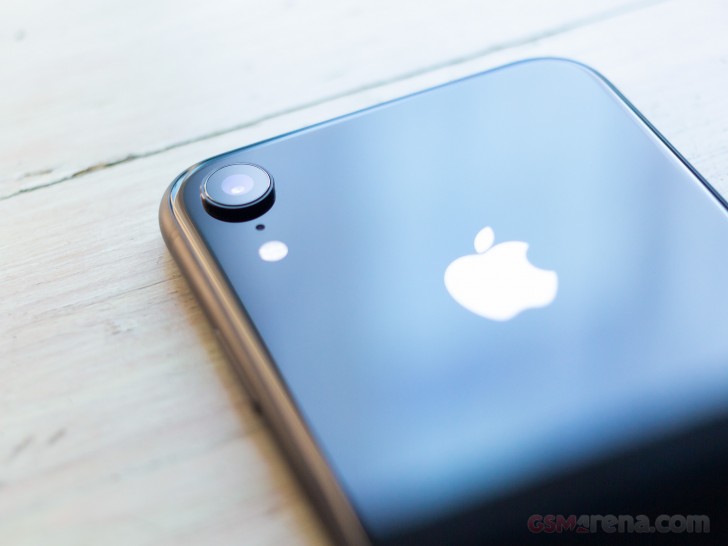
We checked with Apple on this and they confirmed that the back glass is not the same as the front. Still, the back glass is more durable than the glass used on the iPhone X, so it sits somewhere between last year's and this year's new glass in terms of durability.
The sides of the iPhone XR are very similar to the iPhone XS. It is aluminum, of course, but all the buttons are in the same place, as is the single SIM tray on the right. We wish Apple moved the volume buttons on the right for a more convenient placement. The volume buttons on the opposite side of the sleep/wake button also make it easy to accidentally take screenshots.
While the iPhone XS has a rogue antenna line on the bottom ruining the symmetry of the speaker and microphone ports, the iPhone XR has perfectly equal holes on either side. The iPhone XS also has another antenna strip on the top, which is also missing on the iPhone XR. This is due to the Gigabit-class LTE found on the iPhone XS and XS Max that is not available on the iPhone XR.
However, the iPhone XR has its own quirk, which is that the Lightning port is placed slightly lower than the speaker/mic grille, so the three are not perfectly aligned. We imagine Apple had to place the Lightning port lower due to the display taking up space above internally.
The back is relatively clean since there's only one camera at the top. It does stick out significantly from the back and there's no ramp or slope so it just feels like a button glued on the back of the phone. Below that is the quad-LED True Tone flash, which is technically under the main glass but Apple has somehow found a way to avoid refraction and not make the entire back glass glow when the flash is on.
One cool thing about recent iPhones is that they don't have any of the serial numbers or FCC and CE logos on the back anymore. All you get is the Apple logo and the iPhone logo and that's it.
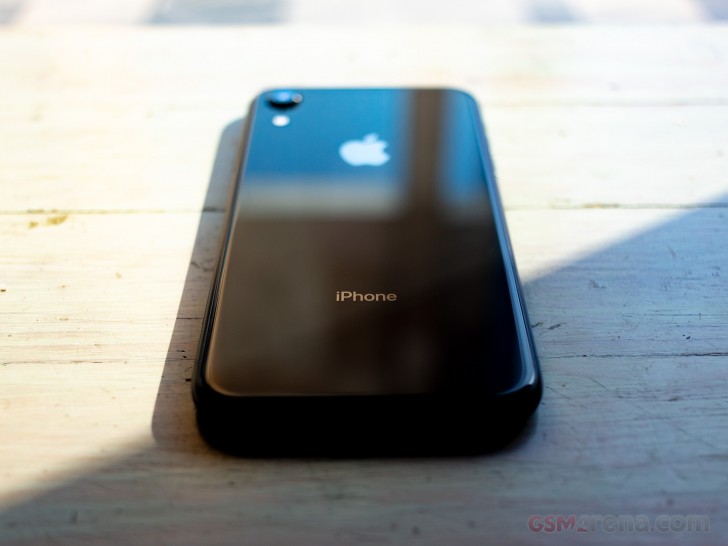
The iPhone XR is IP67-rated for dust and water resistance. This means it's not as water-resistant as the iPhone XS and can be suspended underwater up to 1m instead of 2m, for 30 minutes. We can't imagine this being a deal breaker for anyone and the iPhone XR should be durable enough for most users. But keep in mind that any water resistance may not hold up well with time and that liquid damage is still not covered by the warranty.
Overall, the iPhone XR looks and feels pretty much like a flagship smartphone should in 2018. It may not be as refined or polished (literally) as the iPhone XS but it's still a great looking and feeling phone with one of the widest ranges of color options of any phone in this price range.
Display
The iPhone XR has a 6.1-inch, IPS LCD with a resolution of 1792x828. This gives it a pixel density of 326PPI, which is identical to the iPhone 8 and previous small screen iPhones but less than the Plus sized iPhones (401PPI), and the iPhone X, XS and XS Max (458PPI).
Apple calls this the Liquid Retina HD display because it's LCD, Retina, HD and because Apple likes coming up with these silly marketing names.
That aside, the display has 1400:1 contrast ratio and supports DCI-P3 wide color and Apple's True Tone technology that adjusts the color temperature based on ambient lighting. What you don't get on this display is hardware support for Dolby Vision and HDR-10 (only software support), and 3D Touch.
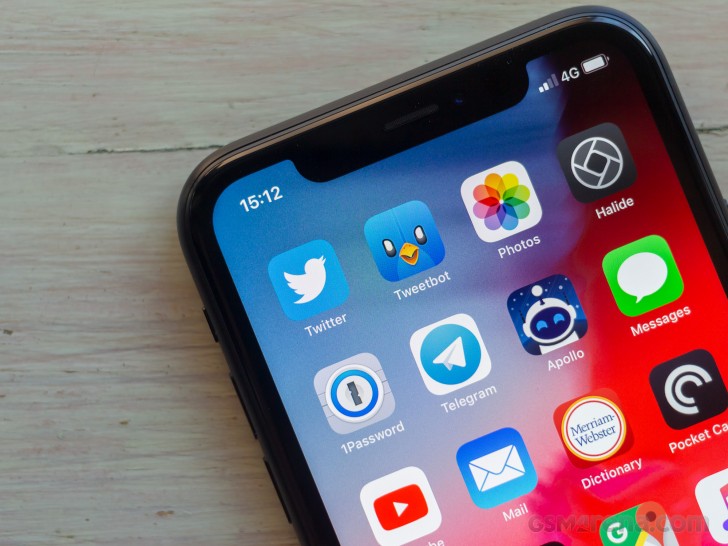
The display has outstanding color performance and when Apple says it has an industry-leading color performance for an LCD, we believe it. Besides just calibrating the display properly, Apple also has support for color management baked into both the software and the hardware. This, along with the wide color support, means the phone can display content in its native color profile without the user having to manually switch modes.
The screen also has excellent viewing angles as expected from an IPS LCD. It also gets extremely bright and is perfectly visible outdoors under sunlight.
Where the display is lacking is in pixel density. A user upgrading from a small size iPhone won't notice a difference but a Plus-sized iPhone user will notice the slight drop in sharpness.
For the record, 326PPI is adequately sharp for most users as it's already pushing past most people's visual acuity. Text, in particular, looks perfectly sharp on the iPhone XR display. Where we noticed the most difference was in images and videos, which were slightly softer. Again, for iPhone 6s, 7 or 8 users, this wouldn't be any different than what they are used to but ideally, at this point, we would prefer if Apple phased out its sub-400PPI panels.
As for being an LCD, Apple's LCD panels have generally been some of the best in the business so we are not going to start complaining now. Yes, the contrast ratio and black levels are weaker compared to OLED panels but Apple's color accuracy is just as good regardless of panel type and the viewing angles and brightness are also satisfactory. On the upside, you don't have to worry about any burn-in, not that it has been a problem on the OLED iPhones.
However, the downside of the LCD also means thicker bezels. The bezels, much like the notch, aren't really noticeable during everyday use. However, both become a problem when watching videos. The bezels make videos appear letterboxed at times and the experience isn't particularly enjoyable. Also, the notch cuts into the video if you make it fullscreen.
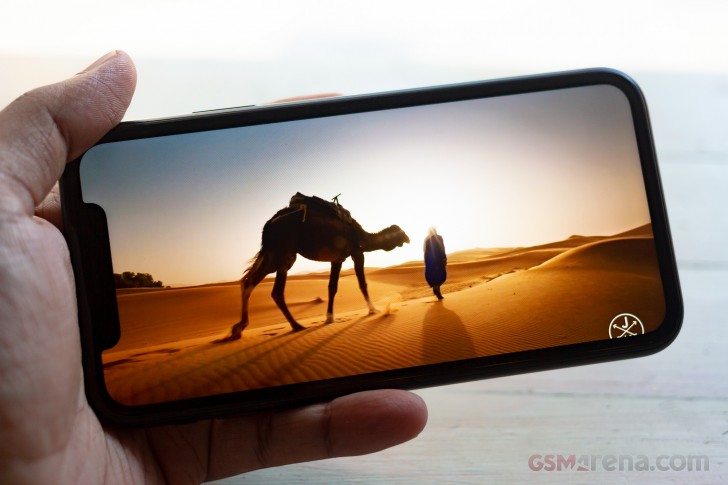
We also missed not having 3D Touch. Understandably, not many people use this feature or even know it exists, but if you're one of the few who does you'd know it's actually an awesome way to get things done quickly. You can get by on this phone in some places by pressing and holding, such as in the Control Center, or some apps like Instagram. On the keyboard, you can just long press on the Space key to move the cursor around instead of pressing down on the keyboard.
Still, you can no longer access app shortcuts by pressing down on app icons as that just makes the home screen go into app uninstall mode, nor can you press down in most other apps to access additional functionality, such as previewing links in Safari or emails in Mail. It's a shame Apple has been so wishy-washy on 3D Touch instead of doubling down and adding it to all its iOS devices. We are sure even the upcoming iPads won't have this feature.
As for other things that are missing, we would have also liked to see hardware support for HDR. Having said that, it's understandable why that is the case as LCD panels without full array local dimming aren't suitable for HDR and ideally, you'd want OLED or similar self-emitting technology. The phone has software support for Dolby Vision and HDR-10 and can emulate an HDR effect in some apps like Netflix and the default Videos app for HDR content purchased from iTunes.
The touchscreen layer on the iPhone XR supports 120Hz refresh rate, much like the iPhone X, XS and XS Max. This is not the panel itself refreshing at 120Hz but just the touchscreen layer. With twice the polling frequency, the touchscreen layer can recognize and process your inputs much quickly, which adds to the feeling of instant reactions and fluidity while scrolling or typing on the keyboard. Apple's touchscreen latency has always been the benchmark but with the increased frequency it's indistinguishable from having zero latency.
Speaking of the touchscreen, it's good to see Apple implement proper touch rejection once again. While watching videos, you can comfortably rest your thumb on the edges of the screen or even parts of the screen itself and the phone is smart enough to know you're just resting your fingers and not interacting with the screen. This has been a major problem with Android devices and their shrinking bezels that continue to lack any sort of touch rejection, even recent ones like the Pixel 3 XL.
Software
The iPhone XR ships with iOS 12, or to be precise, iOS 12.0.1. We have covered iOS 12 in the past and the software experience is generally similar or identical to other iPhones, from the most expensive iPhone XS Max to the five-year-old iPhone 5s.
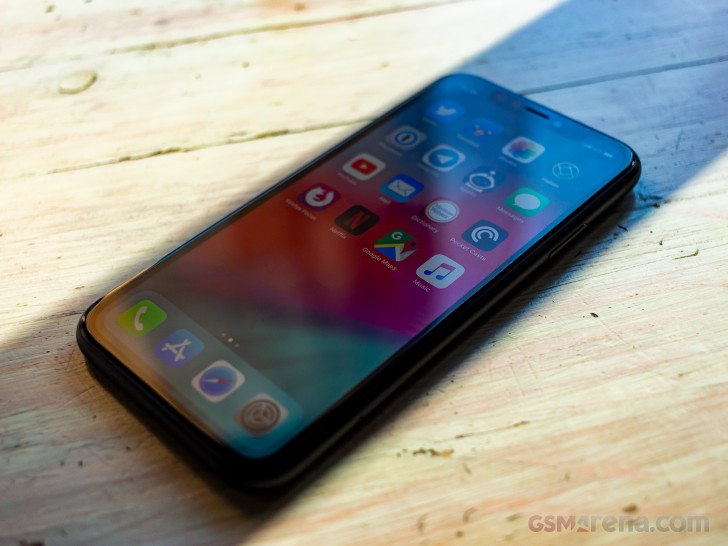
Where the iPhone XR and the iPhone X-series devices separate themselves is with the new gesture-based UI. Although Apple was hardly the first to implement such a system, in the current era, no other company has such a comprehensive gesture-based implementation that is fully reliant on gestures and built around it, rather than it being added on as a secondary measure.
A good example of this is the unlock process. You pick up the phone and it wakes up the screen. By the time you swipe up, the Face ID system has finished scanning your face and you go straight into the home screen or wherever you left your phone previously. It's a fairly simple gesture that requires no tapping, pressing or waiting for things to happen.
Most other phones with facial recognition just unlock the phone automatically without requiring an additional swipe. iOS requires a deliberate swipe gesture, otherwise, it will show you your lock screen with notifications. Apple has implemented another clever feature here, where the notifications only expand when the phone scans your face and knows you're looking at the phone. Otherwise, they remain collapsed with just the name of the app and sender visible.
The gesture-based interactions come into full force once you unlock the phone. A swipe up takes you home from anywhere in the UI. A swipe up and hold shows open apps and with iOS 12, you can swipe on each window to close it. Within an app, you can swipe from the left edge to go to the previous screen. If you want to go to the previous app, just swipe sideways on the home bar at the bottom.
What makes the whole system work is that first of all, it was built from the ground up to support gestures. Secondly, all gestures are followed by appropriate transition animations, which flow in and out at silky smooth 60fps and the powerful hardware makes sure it stays that way. The gestures are also intuitive by design and once you learn about them, it's deceptively easy to get used to them, so much so that you start using them on other phones out of habit.
To make things more effortless, other parts of the software and hardware also help immensely. For example, iOS 12 adds two very useful features. One, where third-party password managers are now integrated within the keyboard and secondly, when you get an SMS with OTP, the keyboard suggests it automatically.
This means you could be in an app and it asks for your password. The keyboard pops up and you see your password manager is already offering you an option to fill it in. Before it does that, Face ID will quickly pop up for a split second to check if it really is you and the password gets filled in. If on top of that you get an OTP SMS, the keyboard will then suggest the number from the received message, which can be entered with one tap automatically into the field. And just like that, you are signed in. No switching of apps, no messing about with notifications. You stay where you are and everything comes to you.
Apple also still has by far the best implementation of haptics. The Taptic Engine inside creates precise vibrations that can accurately simulate a button press. iOS also makes liberal use of tiny vibrations everywhere in the UI that are deeply satisfying and effective without being distracting.
With a multitude of minor usability changes such as these in iOS, along with the fluid gesture-based UI and the powerful hardware to chug everything along smoothly, makes using iOS on the iPhone XR one of the most gratifying and user-friendly experience.
However, as much as Apple has worked hard to make iOS more usable in some places, it still stubbornly lags behind in others.
If you get a call on your iPhone, it still takes up your entire screen and if you don't want to answer it, you are left staring at your now useless screen till the caller decides to end it. The volume bar in many apps still takes up a huge chunk of the screen and often covers up the thing you're trying to see. The battery low message will rudely interrupt whatever you are doing and demand your full attention.
The iPhone X-series of devices also has the Control Center, an often-used part of the interface, at the top right corner of the display, which is out of reach even on the iPhone XR. The Reachability gesture helps a bit but it just adds additional swipes to the process.
It's still not possible to set default apps in iOS. You can choose to manually open a particular file or a link in a particular app but you can't choose a default as the OS does it for you.
iMessage users still complain about their messages not being synced properly, despite it being an important feature that most use on a daily basis. iMessage UI is also quite convoluted at this time, with way too much functionality crammed in that many people will never find or know how to use.
Then there are other inanities, such as the settings for first-party apps like Camera and Safari are not within the app itself. To adjust Camera settings such as resolution, you first have to go to the main Settings app and then Camera. The settings are also confusing; the resolution option controls the resolution and frame rate for both front and rear cameras at once, and nowhere in the UI is this is specified in any way.
The Settings app, in general, is a bit of a maze to anyone not used to iOS. Apple relies heavily on this app to house all of its settings and some of them are kept in places where you'd never expect to find them. Even as someone used to iOS by now, we still often have to pause and think about where exactly the option is that we are looking for, then proceed to not find it and eventually use the search function. Ideally, you shouldn't have to need search inside a Settings app, but that's just how it is now.
Apple also continues to offer a practically insulting 5GB of iCloud storage by default to every Apple ID. 5GB is not enough to backup anything, let alone the 4K60 videos these phones are now capable of recording. Not only do you get 5GB, but the backup feature is also enabled by default, so all your photos and videos are being backed up without you even knowing. While the higher storage tier options aren't expensive, it's not too much to ask for enough storage to backup at least the base 64GB models completely without having to pay extra.
None of these niggles sound like a deal-breaker on their own, and they aren't. But put together, they can be a source of annoyance and diminish some of the work Apple has put in elsewhere in the UI to make it all work well. The sad part is that many of these are easy fixes should Apple choose to correct them, but it seems like it just doesn't want to at this point.
Performance
The iPhone XR ships with the same brand new 7nm A12 Bionic chipset found inside the new iPhone XS. This is Apple's own custom designed chipset, with a custom 64-bit six-core CPU that has two high-performance cores (Vortex) and four high-efficiency cores (Tempest), in a big.LITTLE configuration that lets the CPU controller decide which cluster is suited for a particular task or run all six at the same time. The Vortex cores are said to be 15% faster and consume 40% less power than the Monsoon cores from A11 Bionic, and the Tempest cores are said to consume 50% less power than the Mistral cores from last year.
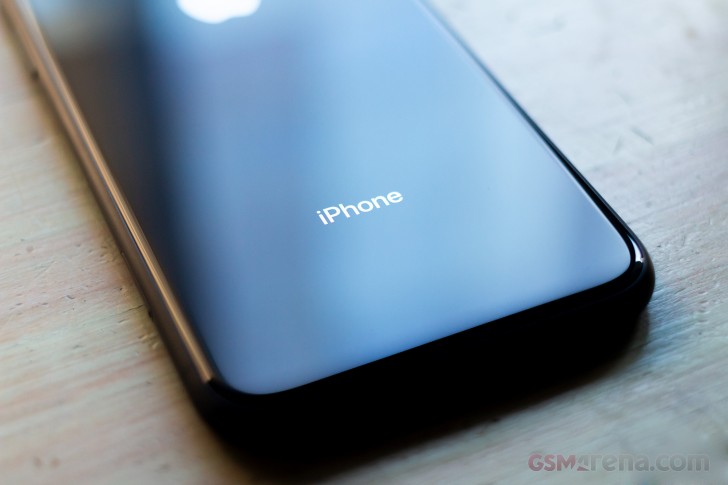
For the first time, the A12 Bionic also includes an Apple-designed quad-core GPU that is up to 50% faster than last year's with support for tessellation, multilayer rendering, and lossless memory compression.
GeekBench 4.1 (multi-core)
Higher is better
Lastly, the A12 Bionic also includes an updated version of Apple's Neural Engine, which is now an octa-core part with multiprecision support and a smart compute system that decides which between the three, CPU, GPU and NE, should process the task for best performance and efficiency.
We have already taken a look at the A12 Bionic performance in our iPhone XS and iPhone XS Max reviews, and it performs essentially the same inside the iPhone XR. As of today, the A12 Bionic is the fastest mobile processor on the market, beating even the new Kirin 980 despite Huawei's tall claims.
GeekBench 4.1 (single-core)
Higher is better
The A12 Bionic enjoys such a massive performance advantage at this point that we don't expect anything to supersede it until next year's A13 releases. The performance is especially comical on the iPhone XR as it has a lower resolution display, which causes the on-screen graphics test results to top the charts even in the most demanding tests.
GFX 3.1 Manhattan (1080p offscreen)
Higher is better
GFX 3.1 Manhattan (onscreen)
Higher is better
In real-world usage, the iPhone XR performs flawlessly. At this point, it officially has too much power and you're basically sitting on reserve power that will only come into play a year or two down the line. Outside of a few things, such as the camera and AR, there are very few things on this phone that can take full advantage of that hardware today. If anything, it's the 3GB RAM that will end up being the bottleneck in future but iOS is generally good at managing memory so it's not going to be an issue any time soon.
We also liked that Apple improved the Face ID performance this year. The TrueDepth camera system is identical but because of faster algorithms and a newer, faster Secure Enclave on the A12 Bionic, the camera can process the facial data faster.
GFX 3.1 Car scene (1080p offscreen)
Higher is better
GFX 3.1 Car scene (onscreen)
Higher is better
Face ID is not as instantaneous as some of the other 2D camera based facial recognition systems out there but it's still very fast, especially when you consider it's a security-first feature, with speed being second priority.
Most of the time when you use it to scan your face to authenticate an app or use Apple Pay, the Face ID icon just flashes on screen for less than a second before it scans you. And because it's as secure as it is, you can actually use it for things such as payments and authentication within other apps. It's also a lot more convenient than any fingerprint sensor as you don't have to move your hand at all, and as long as you're looking at the screen you get authenticated.
Aztek Vulkan Normal (1080p offscreen)
Higher is better
Aztek Vulkan Normal (onscreen)
Higher is better
Face ID is also more reliable now. We rarely had any issues getting it to unlock and it worked fine even when lying down in bed or outdoors in bright light. With iOS 12, you can also add an alternate appearance for yourself or a second person to unlock your phone, although the latter does make the system less secure.
Audio
The iPhone XR gets the same new stereo speaker system that you find on the iPhone XS.
Apple upgraded its loudspeaker system for the third year in a row. After introducing stereo speakers on the iPhone 7, Apple upgraded it last year on the iPhone 8 and X with louder sound. This year, the new iPhones get what Apple is calling wider stereo playback.
The new speaker system sounds basically like it has a surround sound effect enabled permanently. The sound is projected further outwards creating a wider soundstage. This makes the audio sound more three dimensional when listening to stereo effects.
This is obviously not really noticeable when listening in portrait mode but immediately obvious when you hold the phone sideways. Whether you are watching movies or playing games, there is a much wider sound enveloping you with improved stereo projection. It actually sounds pretty cool in games with positional audio, such as PUBG or Fortnite, where you can hear the sound of gunshots or footsteps from around you.
The effect seems optimized for movies and games particularly, as music doesn't always benefit from such wide presentation. Not that it sounds bad, but it's not ideal. Still, you're less likely to listen to music on loudspeakers than videos or games, so as a whole it's an improvement.
The speakers also sound exceptionally clean and clear all the way to the max volume. Apple applies equalization to the sound as you increase volume but the sound never drastically changes as it tends to with most smartphone speakers. Even if you blast these at full volume, it just sounds louder without the audio changing much from lower volume levels in terms of frequency response.
Apple's sound balance is also one of the best out there. Many manufacturers with stereo speakers struggle to get the volume even across both speakers, and although Apple's speakers also have different volume levels, they balance it out since one points directly at you and one sideways. The end result is a perfectly balanced stereo sound. The speakers also switch channels if you rotate the phone, regardless of whether the auto rotation is enabled or disabled in settings so the audio always comes out the correct side.
As with all new iPhones sold going forward, the iPhone XR does not come with the Lightning to 3.5 mm Headphone Jack Adapter. You do get the standard EarPods, which sound fairly decent and have audio controls built-in, but their fixed design means they don't fit everyone. At this point, Apple really just wants you to get wireless headphones, which isn't such a bad idea, except we'd still like to have the option to use wired headphones, even if with an adapter.
Camera
The iPhone XR has a single 12MP f1.8 camera on the back with OIS and quad-LED two-tone flash. The camera is capable of recording videos in up to 4K60. On the front is Apple's TrueDepth camera system with a single 7MP f2.2 camera and 1080p60 video.
The single rear camera is one of the compromises Apple made on the iPhone XR compared to the iPhone XS. However, Apple did keep the Portrait mode on the iPhone XR, along with the new Depth Control feature introduced on iPhones this year.
Since this is the only difference between the iPhone XR and the iPhone XS camera, let's focus on this first.
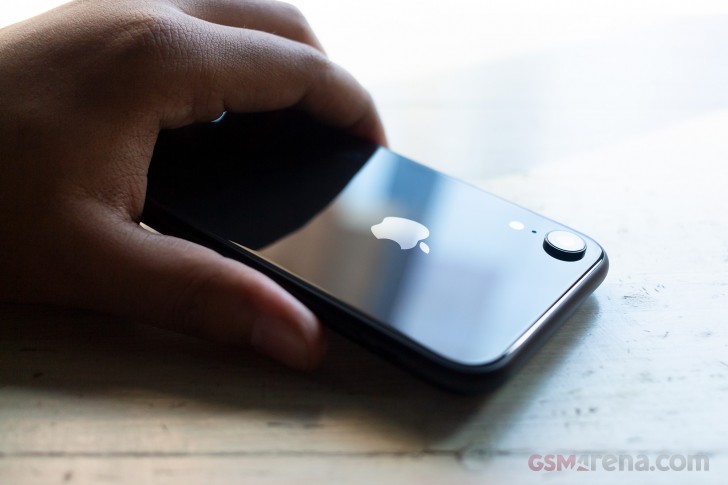
The Portrait mode on the iPhone XR works differently than it does on the iPhone XS or previous iPhones with dual cameras. The way this works is similar to the portrait mode implementation on the Google Pixel 2 and Pixel 3. The camera uses the two photo sites on each sensor, which are primarily used for autofocus, to create a depth map of the subject using their different perspectives. It then uses machine learning to further separate the subject from the background and then applies a lens blur to the background.
The other difference with the Portrait mode on the iPhone XR is that it now uses the main wide-angle lens to take the Portrait mode photos since it's the only camera available. In comparison, all other iPhones with Portrait mode use the telephoto lens for Portrait mode photos.
Lastly, the Portrait mode on the iPhone XR only works for people. The effect kicks in only when the camera detects a person in the frame or, more precisely, a face in the frame. Since it relies on human-specific AI to work out the portrait rendering, you can't use the Portrait mode on the iPhone XR to take pictures of objects or even the back of a person like you can on the iPhone XS or even the Pixel 3.
With that out of the way, let's see how the Portrait mode on the iPhone XR performs when compared against the iPhone XS and the Pixel 3. To make sure the same amount of the subject was in focus and to demonstrate the differences between the three cameras, we physically moved back and forth with the three phones.
We will talk about the quality of the effect later, but first, let's focus on the perspective. Between the three, the iPhone XS clearly has the most appealing look and is the most flattering to the subject. The telephoto lens required us to be the farthest away from the subject, which reduced lens distortion. It also contained the least amount of background due to a narrower field of view, which is desirable for portrait images. Overall, the image looks closest to what you'll see from a proper camera with a telephoto lens and is the most convincing.
The Pixel 3 XL had the second widest (or narrowest) field of view and generally the second-best look. Technically, the Pixel 3 XL also uses its single wide-angle lens to take Portrait mode images but Google applies a digital crop in Portrait mode, which gives the appearance of a telephoto lens, although not as much as that on the iPhone XS.
The iPhone XR required us to be the closest to the subject, which introduced barrel distortion that is typical of wide-angle lenses when you get close to a subject (they are meant to be used for capturing landscapes, after all). This resulted in the least flattering picture of the three cameras and the one most easily identifiable as a smartphone camera picture.
We're not saying the wide-angle lens is completely unusable for portrait photography. You can certainly have some fun with the wider perspective and the opportunities it opens up. It also doesn't require you to step as further back as a telephoto lens does, so in some cases, it can be more practical. Also, low light Portrait mode photos will look better on the iPhone XR since the main 12MP camera has a better sensor and wider aperture than the telephoto 12MP on the iPhone XS. But most portrait photography is done in situations similar to the one we have demonstrated above and in such cases, a dedicated telephoto lens will always give better results.
Losing the telephoto lens also means no more 2x optically zoomed images. Admittedly, the telephoto lens would become useless in less than ideal conditions and the phone won't even use it unless you use a third-party app to force it. But when it worked, it gave much better results than digital zoom, which is what you have to use here.
Apple's digital zoom is decent but it's nowhere near as good as the Super Res Zoom feature on the Pixel 3. We also missed having a 2x zoom button in the camera app, and you have to pinch out on the screen to zoom, which has no markings for precisely how much you're zooming so our 2x zoom image below is only a rough approximation. In comparison, the Pixel 3 camera app lets you do a 2x zoom just by double tapping.
In terms of general image quality, the iPhone XR has an identical main 12MP sensor and optics as the iPhone XS, and the image quality will be identical. The images we got from the iPhone XR were sharp, with plenty of detail and well-controlled noise levels. The images were well exposed and had good contrast. The somewhat flatter, more natural images are also ideal for manually editing later.
The colors were generally good, too. iPhones have one of the most recognizable colors of any smartphone camera, where skin tones, in particular, can have an orange hue, which doesn't look especially appealing. It's present to some extent here as well, but not as prominent as it was with the last year's iPhones. Previous iPhones also had an aggressively warmer tone and a tendency to lean towards a green hue, which resulted in a pale-yellow color to images, but that has also been mitigated to a large extent.
Overall, the color performance this year is really good, and the iPhones are still the only smartphones with wide-color support, so if you have a computer with a DCI-P3 capable display and OS, then you can see the images in all their glory with truly outstanding color range, especially in the red region.
The main point of improvement this year has been in dynamic range. Like Google, Apple now does extensive image stacking work, capturing multiple frames for every shot with separate low and high exposure intermediate frames. The result is an astounding coverage of both highlight and shadow areas. The new Smart HDR feature, as it is called, is a lot more active than HDR on previous iPhones and fires for practically every shot. Even if images have a small area of bright highlights, the HDR will kick in and recover those details.
We did notice some funny business with some neon lighting in some shots. It wasn't the lighting itself but rather the reflection of that lighting as you can see in these shots, where the reflected light patterns are clipping with a blotchy appearance. Perhaps something Apple could fix in a future update.
Coming back to the Portrait mode images, the iPhone XR has the Depth Control feature from the iPhone XS. This lets you adjust the intensity of the background blur on Portrait mode images after they are taken. This is similar to the feature seen on phones like the Samsung Galaxy Note9 but instead of applying a Gaussian blur like Samsung, Apple applies a lens blur, which more closely mimics the effect of aperture and natural lens blur. The control dial also has f-stops so you can recreate the look of a lens with a particular aperture.
By default, all Portrait mode images are saved at f2.8, but you can adjust it from f1.4 to f16. Below, we have samples from f1.4, f2.8, f5.6 and f16. We chose f5.6 because it seemed like a good value where you still get some background blur but it's not as aggressive as the default f2.8, which can look more artificial and also shows the shortcomings of the software blur more easily.
The overall effect works well despite using just one camera. Like Google, Apple is clearly using machine learning to do the heavy lifting here and the results can be really good at time, if a bit imperfect. Had it not been for the different look and 2x optical zoom capability of the telephoto lens on the iPhone XS, we would have genuinely questioned the need to have a second camera.
Comparison to this year's Pixel 3 is inevitable, so here it is. In our testing, we found very little to separate the two. Generally, the image quality by both phones is practically identical to the point we felt like we were splitting hairs.
Where the two differ is in dynamic range handling and colors. The Pixel 3 tends to underexpose every shot, which results in better highlight detail at the cost of some shadow detail. The contrast is also on the higher side. The Pixel also tends to prefer cooler white balance with a slight magenta hue. The iPhone camera, on the other hand, tends to expose a bit brighter with a slightly lower contrast. Its white balance is also on the warmer side with a slight green hue. This results in the Pixel images often appearing punchier out of the camera next to the iPhone images, although you can very easily edit either to look like the other.
The level of detail is similar but the Pixel tends to sharpen its images more aggressively, which further contributes to the sharp, punchy look of Pixel images. Bottom line is, while both take similar pictures, the iPhone goes for a more natural look while the Pixel pushes for a more appealing image.
Having said that, the differences are definitely minimal and the preference boils down to personal taste. We could genuinely mix up shots from both phones and even die-hard fans of both devices would be hard-pressed to tell them apart. The point is, both phones take excellent photos and are at the very top of their game.
In terms of video, the iPhone XR clearly leads the pack with 4K60 video recording. Optionally, you can shoot at 4K30, which has a wider dynamic range as the phone is still shooting 60 frames per second internally but every second frame is exposed differently and composited to create a 30fps video with wider dynamic range. 30fps videos also have EIS for an even more stable look.
A new addition for iPhones this year is stereo audio recording, which works as you'd expect. Interestingly, this year even the Pixel 3 is recording stereo sound, as the Pixel phones also had mono recording on previous phones.
Battery Life
The iPhone XR has a 2942mAh battery, which is larger than the battery on the iPhone XS but smaller than the one on the iPhone XS Max.
However, because most of the iPhone XS Max' extra battery capacity goes into powering that massive OLED display, the iPhone XR actually has the highest battery life out of the three new iPhones this year, according to Apple's own battery life claims.
In our usage, the overall battery life on the iPhone XR was very good. We don't have exact usage numbers and Apple also made it impossible to see the usage since the last charge in the iOS 12 update as it now shows usage in the last 24 hours instead.
Still, based on some rough calculations, we got about 6-7 hours of screen-time on this phone and about 20-22 hours of usage. Even after a day of photo taking, navigation, social media usage, calling and general usage, the iPhone XR still had about 15% battery left at the end of the day. You can use this phone as you normally would and still go through an entire day without having to worry about it dying on you before the end of the day.
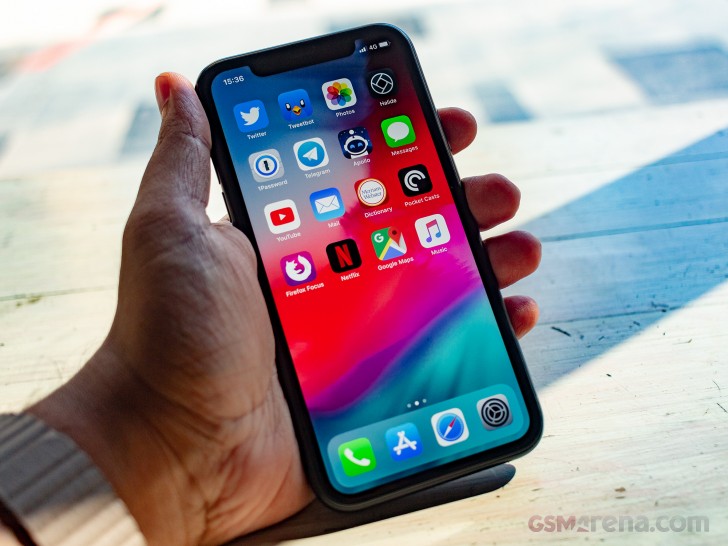
What sours the experience is the charging situation. The iPhone XR comes with the same 5W charger as other iPhones. If you are an overnight charger, this would fit the bill perfectly; the three hour charge time for a full charge should fit easily within a normal sleep cycle and as a bonus, the low wattage should also ensure battery longevity.
But, if you ever need to top up the battery in a hurry, the bundled charger is absolutely frustrating, with even an hour of charging resulting in just 40% power. Our recommendation would be to invest in the 12W iPad charger, which isn't too expensive but dramatically increases the charging times.
Apple's own recommended solution is to get the 30W USB-C Power Adapter ($49) along with the USB-C to Lightning Cable ($35), but that's an expensive solution to a problem Apple created itself. This charger is also bulkier than the iPad's.
Alternatively, you can charge the iPhone XR wirelessly but that requires investing in a wireless charger and even the relatively faster 10W models aren't particularly fast, so again they are best for overnight charges or just to keep topping up your phone whenever you are at your desk and not using it.
Verdict
We said, in the beginning, the iPhone XR is the most interesting iPhone to have come out this year and we stand by it. Here is an iPhone that does 95% of what the more expensive iPhone XS does but at 75% of the cost.
The important things that make the iPhone XS the phone it is are all here. You get essentially the same software experience powered by the same unparalleled A12 Bionic chipset, which has enough spare juice in the tank to maintain its speed and performance for the next couple of years at least.
The camera experience is also very similar. The front camera is identical and the single rear camera on the back is also the same. Most of the photos and videos you will take on this phone will look the same as they do on the more expensive iPhone XS and even more expensive iPhone XS Max.
You also get the same speakers, the same Face ID system, the same dual-SIM functionality, and wireless charging. Not to mention the same great after sales support Apple is known for.
As an added bonus, the iPhone XR comes in six colors and also has better battery life than both the more expensive iPhones.
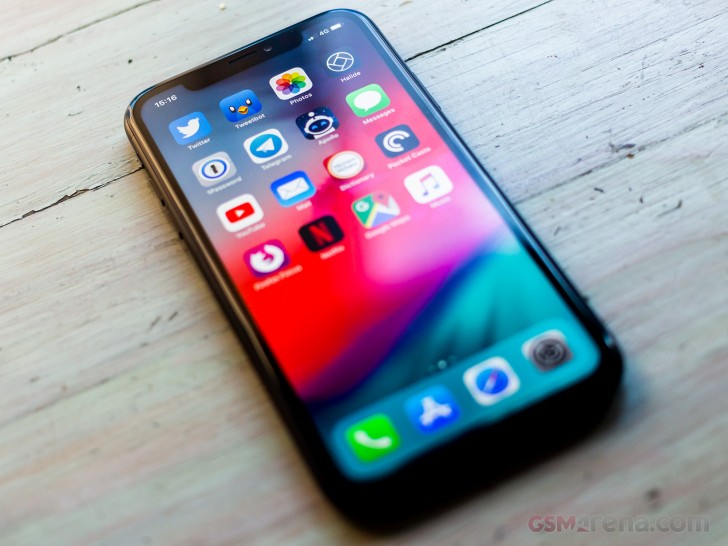
As for that missing 5%, the display isn't quite as nice as the iPhone XS's. It's not quite as water-resistant as the iPhone XS. And the missing second camera means no more 2x optical zoom. We also missed not having 3D touch on this phone.
We are not including the fact that the iPhone XR is made out of aluminum in this as that's more subjective and not something everyone will notice or care. The iPhone XR also makes up for being thicker and heavier by having better battery life, which we think is a fair trade.
In the end, the iPhone XR very much felt like a complete iPhone experience in our single week of usage, and not like a cut-down iPhone XS that some may expect it to be. For most people, this is the iPhone to consider this year as you're getting pretty much everything the more expensive phones offer at a much lower price.
Sure, the iPhone XS still exists as an option if you care about the finer things in life but it's not the default iPhone option anymore. The way we see it, the iPhone XS is the slightly nicer version of the iPhone XR, rather than the iPhone XR being the cheap iPhone XS for those who can't afford the real thing.
Even if you can afford the XS, we'd suggest taking a look at the XR instead, saving some cash along the way which will come handy for the Apple chargers, adapters and cables that you'll undoubtedly need.

















































































0 Comments